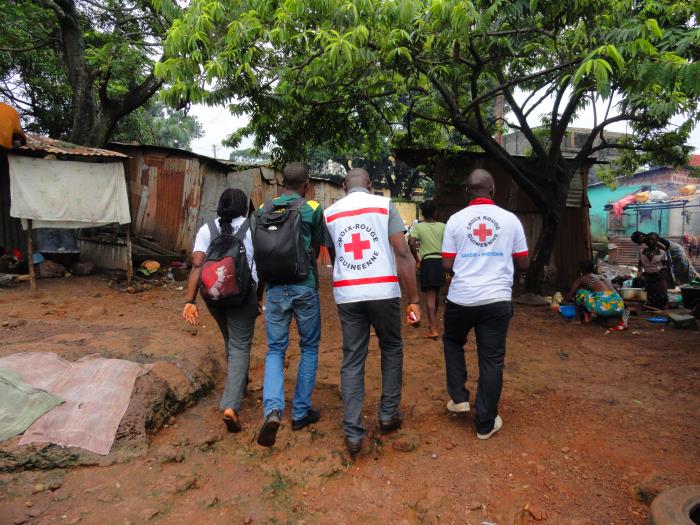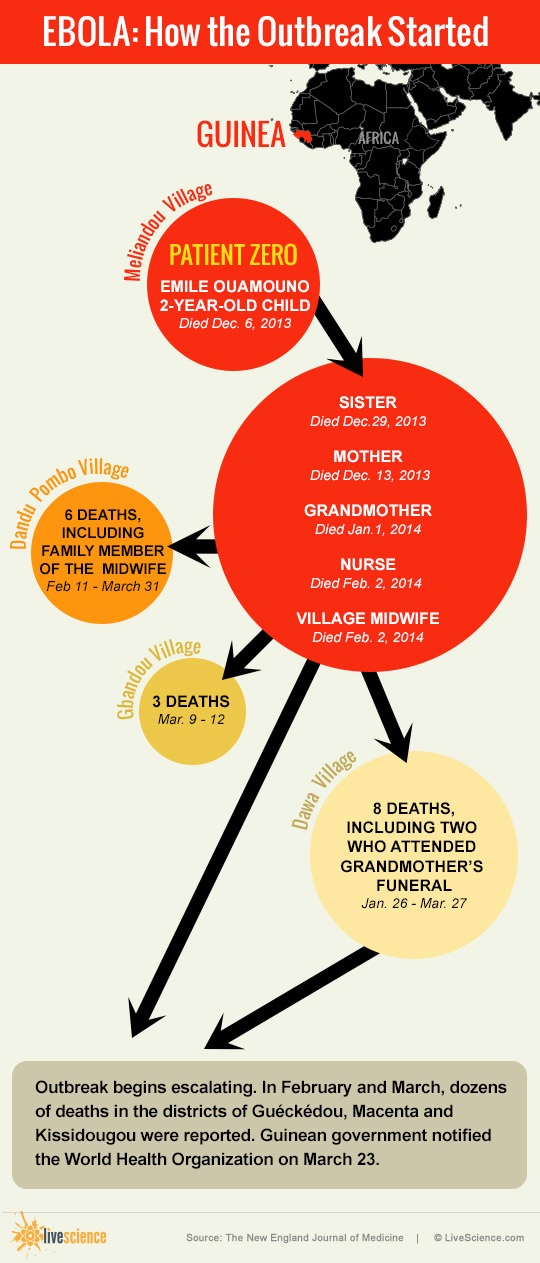Ebola 'Patient Zero': How Outbreak Started from Single Child

When Ebola virus came for the first time to a small village in Guinea, the victim was a toddler, who later became known to the world as Patient Zero. He died on Dec. 6, 2013, at age 2, and the domino effect of his illness has spiraled into the outbreak currently ravaging three nations in West Africa.
His name was Emile Ouamouno.
Emile's 3-year-old sister, his mother and his grandmother all died by January, leaving his father behind.
"Emile liked to listen to the radio, and his sister liked to carry babies on her back," Emile’s father, Etienne Ouamouno, told Suzanne Mary Beukes, a communication officer for the United Nations' children's agency, UNICEF. The siblings liked to dance and play ball near their house, he said.
The disease detectives who traced the Ebola outbreak back to the toddler still don't know how he got infected, according to their report published in the Oct. 9 issue of the New England Journal of Medicine.
The child may have contracted the disease through contact with a fruit bat, as the animals are reservoirs of the virus. Most likely, the outbreak started from only this toddler and no one else, the researchers said, because their genetic analysis of the viruses found in multiple patients' blood samples showed great similarities within the samples. This suggests that the outbreak started from a single introduction of the virus from animals into the human population, the researchers wrote in their report.

Exponential growth
Sign up for the Live Science daily newsletter now
Get the world’s most fascinating discoveries delivered straight to your inbox.
Emile lived in the village of Meliandou in the Guéckédou region of Guinea, just a few miles away from the country's borders with Liberia and Sierra Leone. After Emile and his family members became sick, two health care workers in the village — a nurse and the village midwife — also contracted Ebola and died.
But the sick midwife was cared for by a family member who lived in nearby Dandou Pombo village, and then six additional deaths occurred in that location. The virus also spread to Gbandou and Dawa villages by family members who attended the funeral of Emile's grandmother.
The outbreak escalated from there: A health care worker who may have been infected in Dawa or Meliandou, went to a hospital in another town, Macenta, resulting in 15 additional cases there. The virus also reached people in two other districts in Guéckédou, as well as Kissidougou.
On March 10, hospitals in Guéckédou and Macenta alerted the Ministry of Health of Guinea and Doctors without Borders in Guinea about clusters of a mysterious disease. An epidemic of Ebola was declared on March 23. [Related: Why It's So Important to Find Patient Zero]
By then, the virus had spread to people in Liberia and Sierra Leone. It likely traveled to Sierra Leone by a traditional healer who treated Ebola patients across the border in Guinea, said a study published Aug. 28 in the journal Science. Investigators found that 14 of the mourners who attended this healer's funeral contracted the virus.
Now, nearly a year later after Emile died, the three countries have seen more than 10,000 cases of Ebola, and more than 4,900 people have died of the disease, according to the World Health Organization. [2014 Ebola Outbreak: Ongoing Coverage of the Viral Epidemic]
Lingering fears
Since April, there have been no more Ebola cases in Emile's village, Meliandou authorities say. But the villagers are struggling with the financial consequences caused by social stigmas, as they are now unable to sell their produce, Beukes wrote. What's happening to the village is part of a bigger picture of what Guinea is facing. More than half of Guineans live below the national poverty line; about 20 percent live in extreme poverty. And with the Ebola outbreak, the situation may get even worse.
"The World Bank estimates the country could see a loss of up to 2.3 percent of its GDP as a result of the stigma now cast over Guinea by travelers, traders and potential investors," Beukes wrote. "The world has virtually quarantined a country in which 43 percent of people were already living on less than $1.25 a day prior to this health crisis."
Email Bahar Gholipour. Follow Live Science @livescience, Facebook & Google+. Originally published on Live Science.










